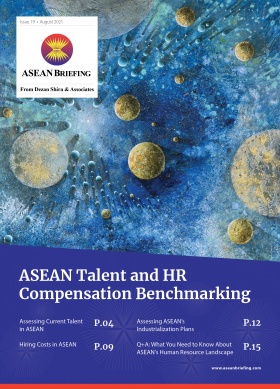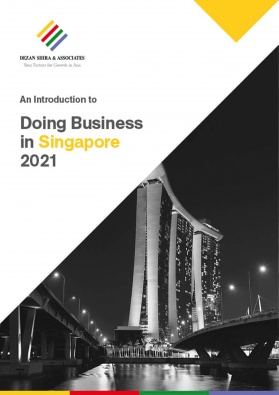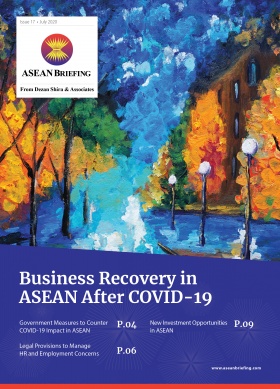The US-ASEAN Trade and Investment Facilitation Agreement Explained
The US-ASEAN Trade and Investment Facilitation Agreement (TIFA) is a framework that defines economic engagement between the two parties. While short on specifics, the TIFA — which was signed in 2006 — sets forth broad goals and principles for the US and ASEAN to cooperatively work toward strengthening trade and investment.
ASEAN is currently the US’ fourth-largest trading partner, accounting for over US$354 billion in trade in 2019. As of 2020, the US was the largest source of foreign direct investment in ASEAN, responsible for over US$328.5 billion in investments. Close to 42,000 US companies export to ASEAN, supporting over 625,000 American jobs.
As trade tensions with China persist, deepening economic relations with ASEAN has become a higher strategic priority for the US. The TIFA, as an overarching framework, provides a useful guide for how the US and ASEAN will increase their economic integration.
Strengthening the relationship
The TIFA contains several references to strengthening the relationship between the US and ASEAN. The TIFA builds upon the two parties’ goals to create an open, multilateral trade environment while building upon previously signed agreements. These include the 1990 Memorandum of Understanding between the US and ASEAN, the Enterprise for ASEAN Initiative, and the US-ASEAN Enhanced Partnership.
The TIFA states that the US and ASEAN recognize that expansion of trade and investment can lead to economic growth and development, which can be achieved through reducing related barriers and fostering an open and predictable environment. Moreover, the TIFA recognizes the role of intellectual property protection in encouraging technological innovation and investment.
Other focus areas of the TIFA include cooperating on standards cooperation, reducing technical barriers to trade and good regulatory practices, support for ASEAN trade facilitation efforts, promoting trade and the environment, and developing an open and transparent business environment for small and medium-sized enterprises.
Establishing a US-ASEAN Joint Council
The TIFA establishes a Joint Council on Trade and Investment to consider ways to enhance trade and investment. The US is represented Joint Council by the United States Trade Representative (USTR) on the Joint Council while ASEAN states are represented by the economic ministers of the member countries.
Specifically, the Joint Council is tasked with overseeing the implementation of the TIFA, reviewing the trade and investment relationship between the participants, identifying new opportunities to enhance trade and investment, resolving issues that arise from the interpretation or implementation of the TIFA, and establishing a work program on trade and investment issues.
The Joint Council is sometimes involved in major ASEAN meetings, particularly those relating to trade and the economy, as well as ties with the US.
Accomplishments under the TIFA
Since the TIFA’s signing in 2006, the Joint Council has continuously worked towards upgrading the US-ASEAN economic relationship. While not solely attributable to the TIFA, it has provided a baseline for other political and economic achievements.
This includes the launch of the Expanded Economic Engagement (E3) agreement in 2012, another initiative to boost US-ASEAN trade and investment. Some observers thought that this agreement would form the basis for a US-ASEAN free trade agreement, although this has not yet materialized.
Further, the US and ASEAN upgraded their relationship to the level of “strategic partnership” in 2015, which increased economic, security, and governance ties between the parties.
The TIFA also set the stage for Trans-Pacific Partnership (TPP), a major trade deal that included the Southeast Asian countries of Brunei, Malaysia, Singapore, and Vietnam, as well as potentially others down the line. However, the US-backed out of the deal following the election of US President Donald Trump, leading to the modified Comprehensive and Progressive Agreement for Trans-Pacific Partnership (CPTPP).
What’s next for the TIFA?
In August 2021, US Vice President Kamala Harris visited Southeast Asia, signaling the US’s intent to deepen ties with the region. As US-China competition heats up, Southeast Asia is poised to emerge as an essential provider of products such as electronics, clothing, and machinery.
At the time of Vice President Harris’ visit, the US and ASEAN agreed on the TIFA arrangement for 2021-22, along with an Expanded Economic Engagement (E3) Work Plan. Focus areas highlighted in these agreements were the digital economy, small and medium-sized enterprises, and sustainable development and labor.
In addition to continued engagement through the US-ASEAN TIFA, foreign investors in ASEAN should note that the US also has similar agreements with individual ASEAN member states. These agreements act in a similar way but are more tailored to address the particular bilateral relationship.
For example, in 2019, the US Trade Representative supported the US Chamber of Commerce’s recommendation to upgrade the US-Vietnam TIFA. Doing so would allow the US to address market access and regulatory concerns specific to its relationship with Vietnam, which may not be relevant to other ASEAN countries.
Accordingly, as US ties with Southeast Asia deepen, foreign investors in ASEAN should consider trade and investment dynamics at both a regional level and a country-specific level.
About Us
ASEAN Briefing is produced by Dezan Shira & Associates. The firm assists foreign investors throughout Asia and maintains offices throughout ASEAN, including in Singapore, Hanoi, Ho Chi Minh City, and Da Nang in Vietnam, Munich, and Esen in Germany, Boston, and Salt Lake City in the United States, Milan, Conegliano, and Udine in Italy, in addition to Jakarta, and Batam in Indonesia. We also have partner firms in Malaysia, Bangladesh, the Philippines, and Thailand as well as our practices in China and India. Please contact us at asia@dezshira.com or visit our website at www.dezshira.com.







